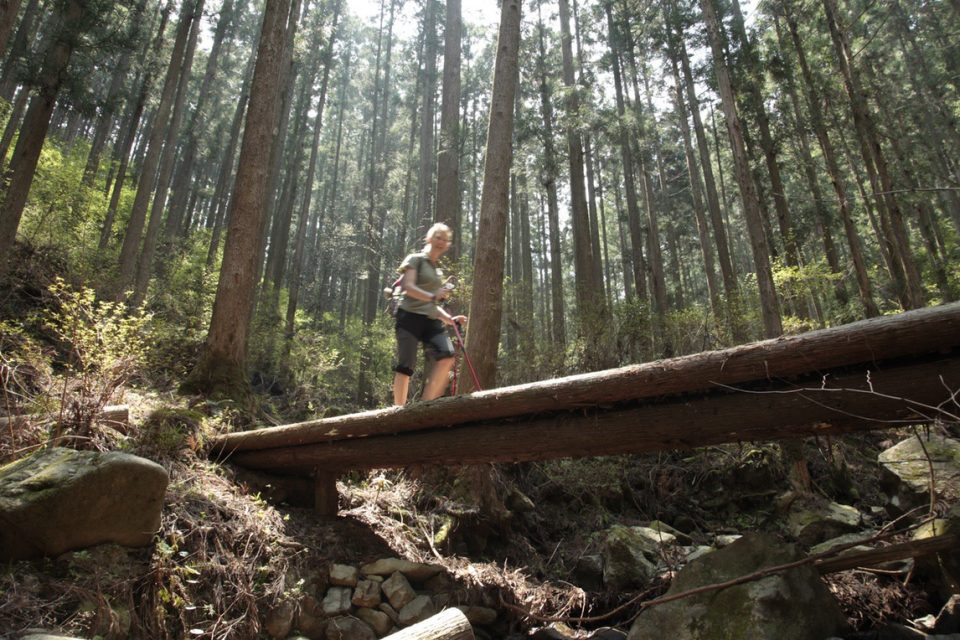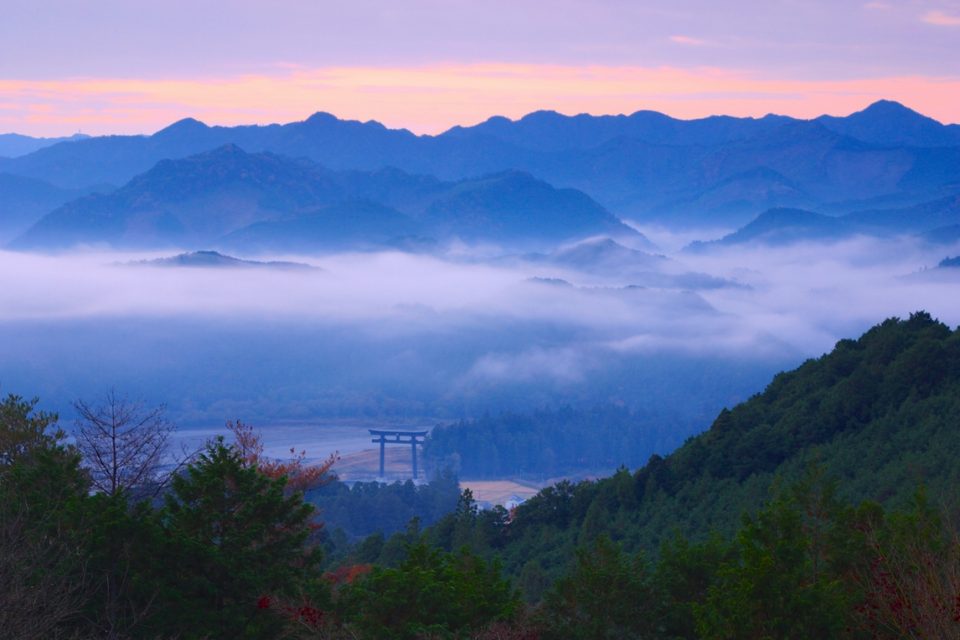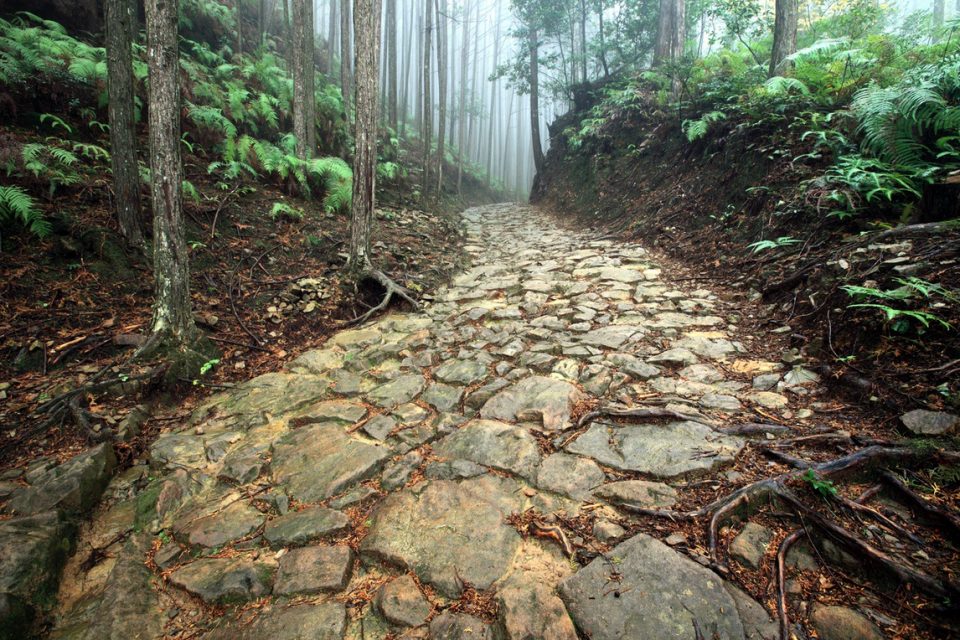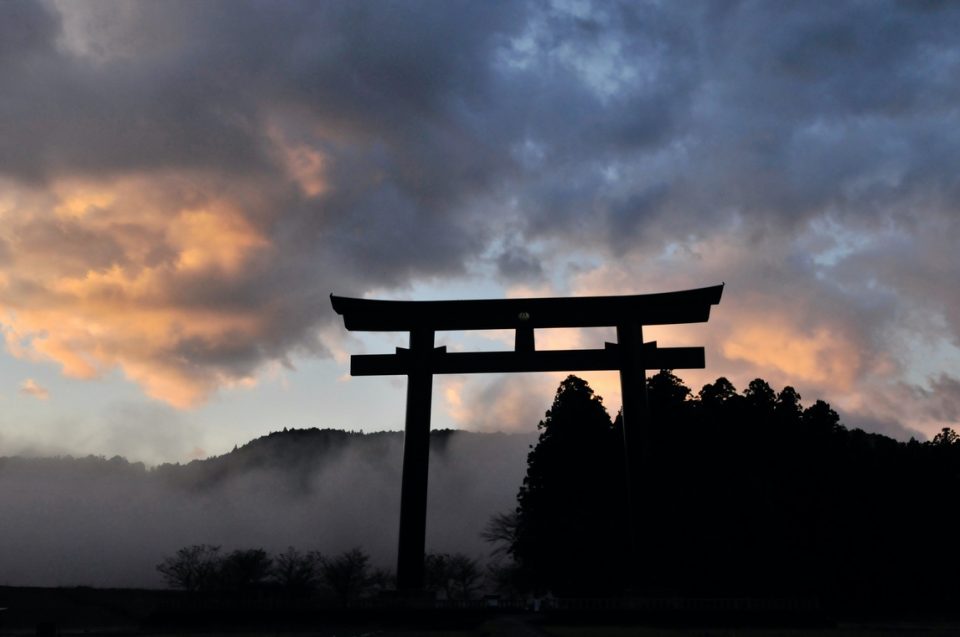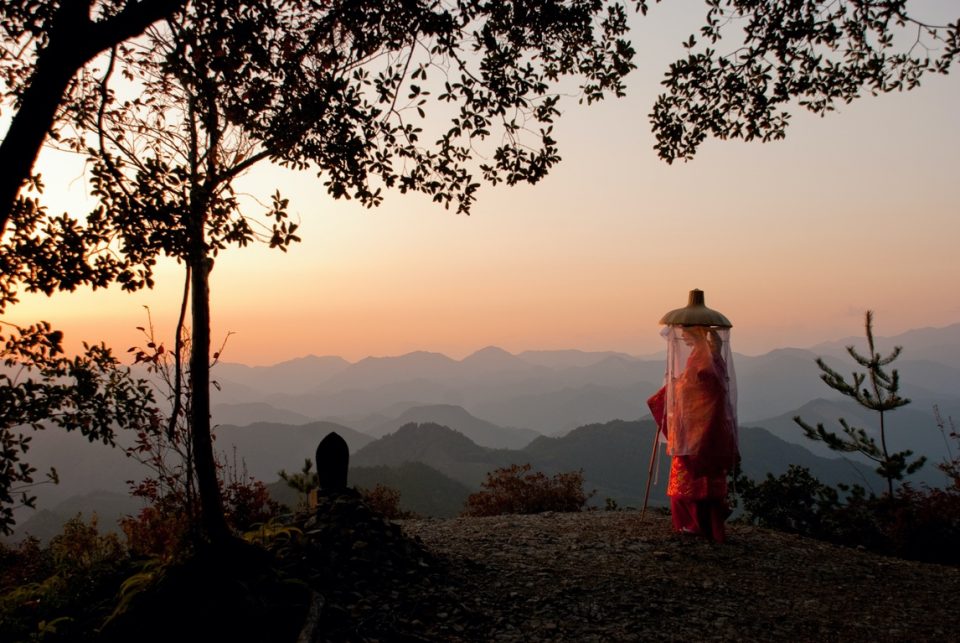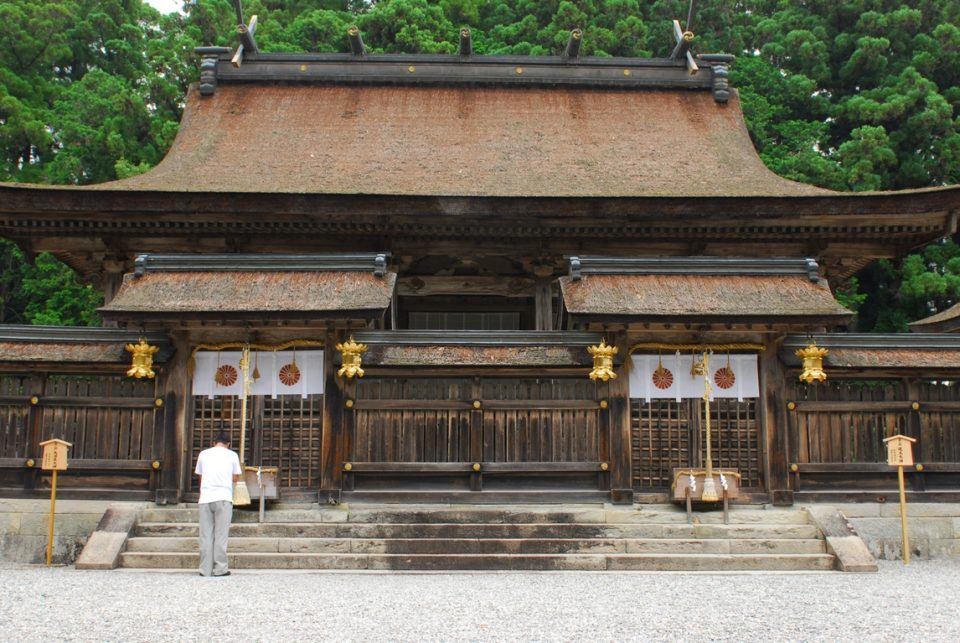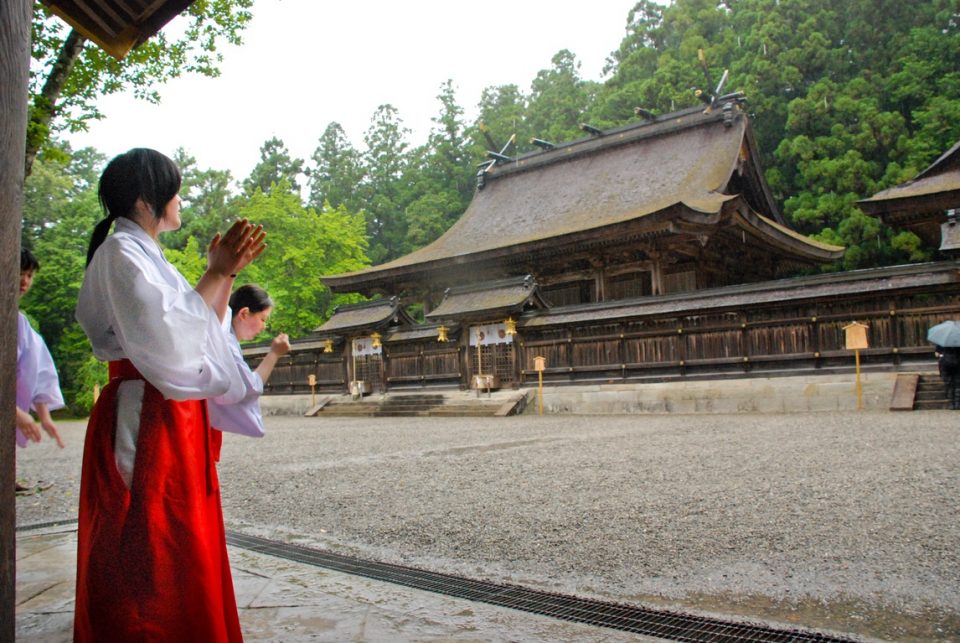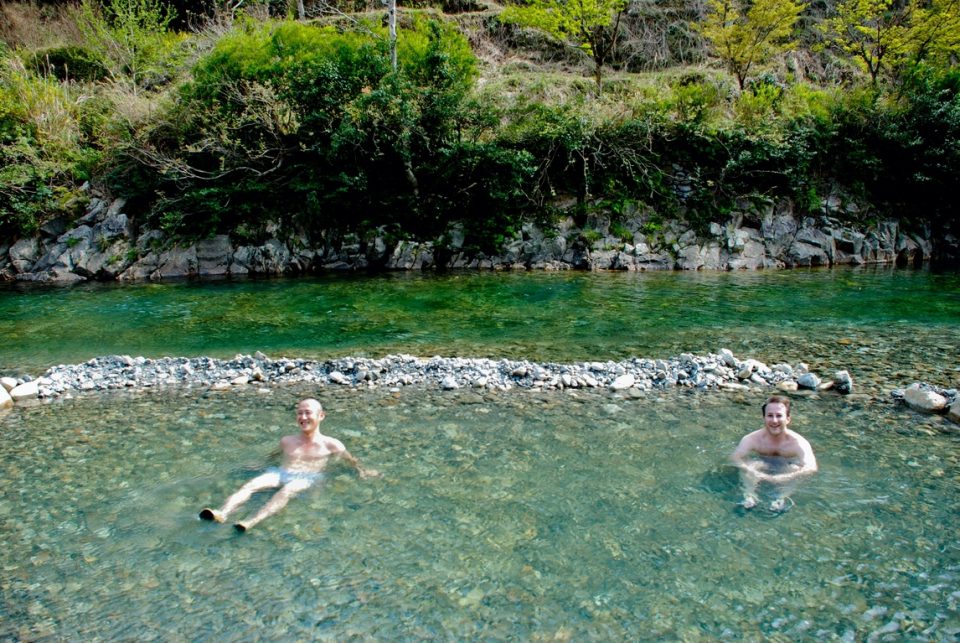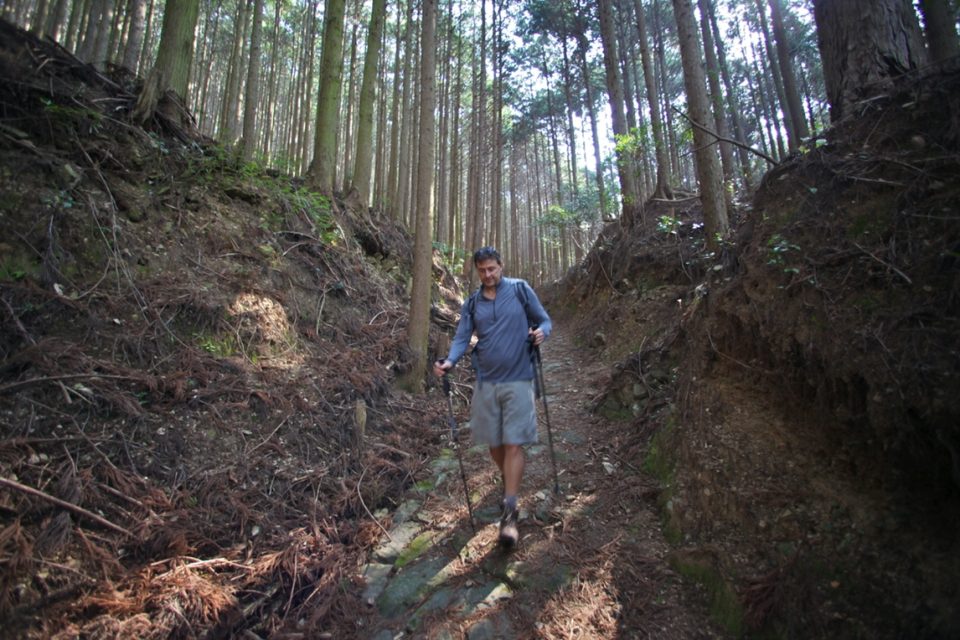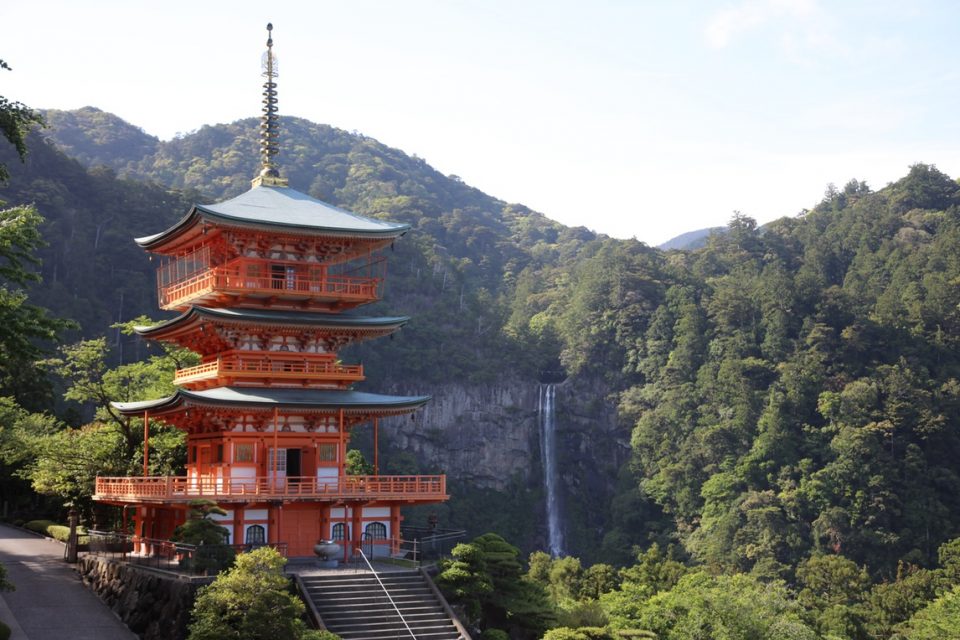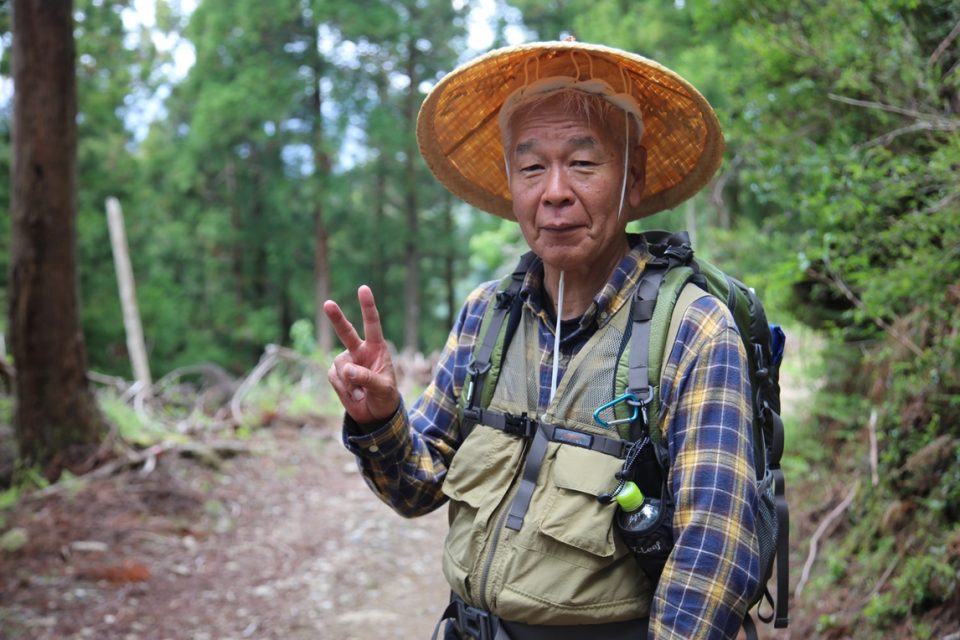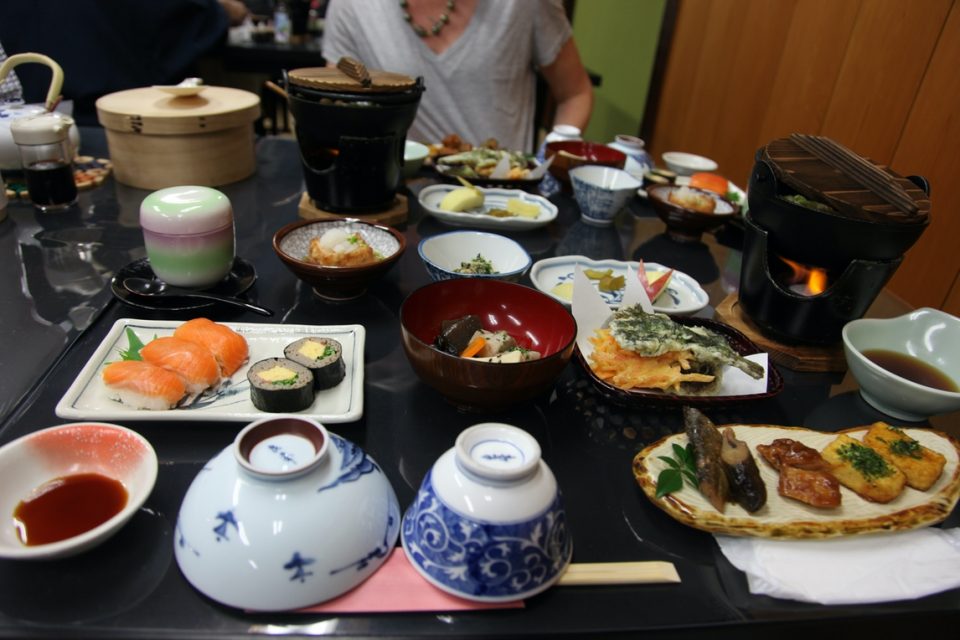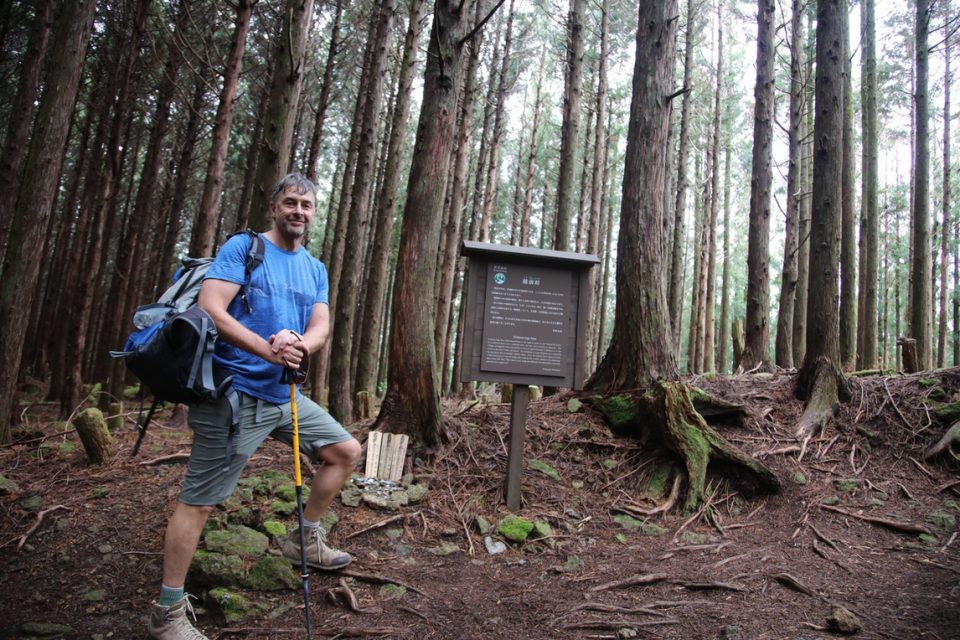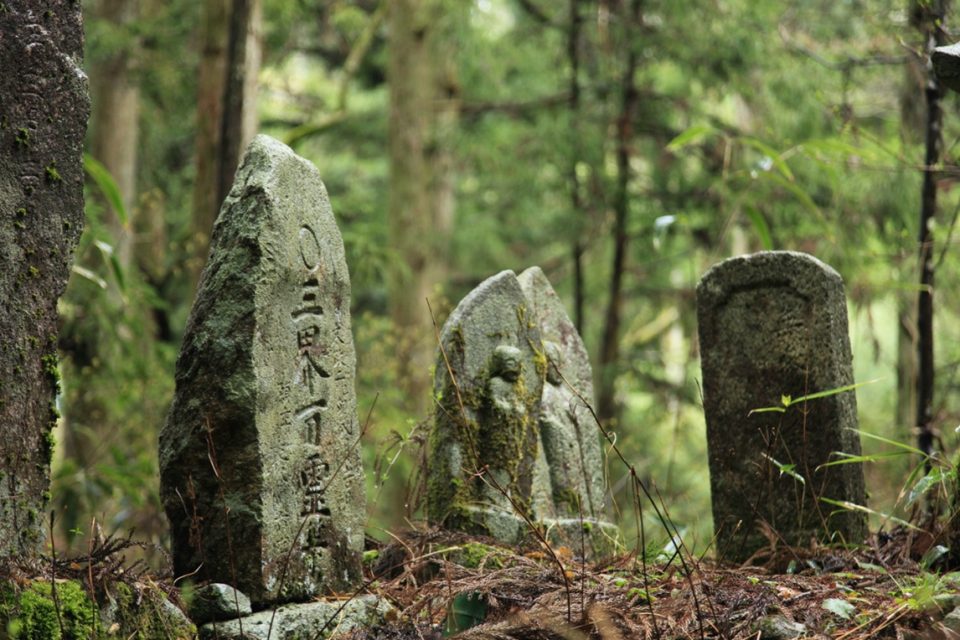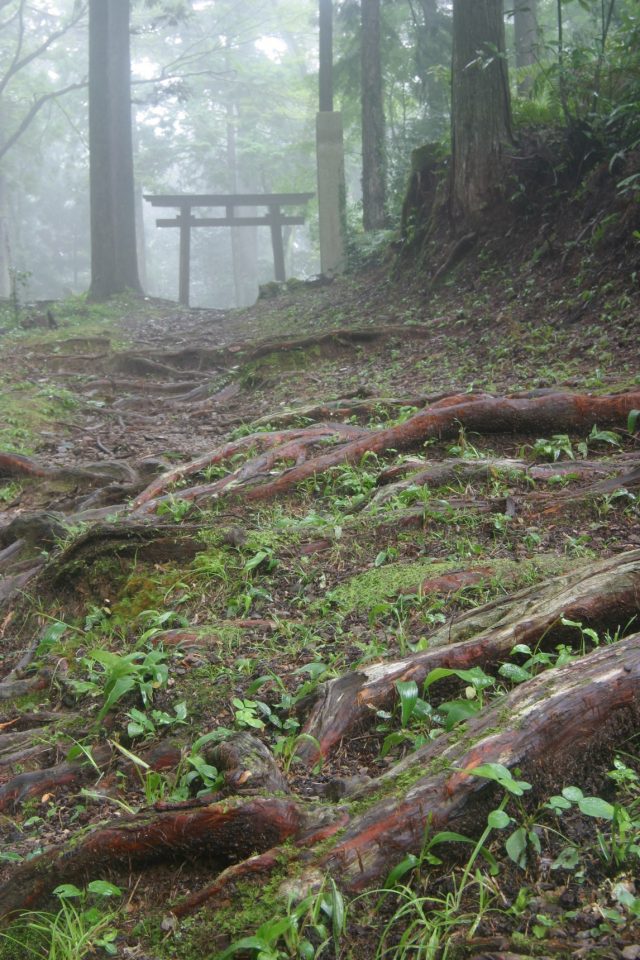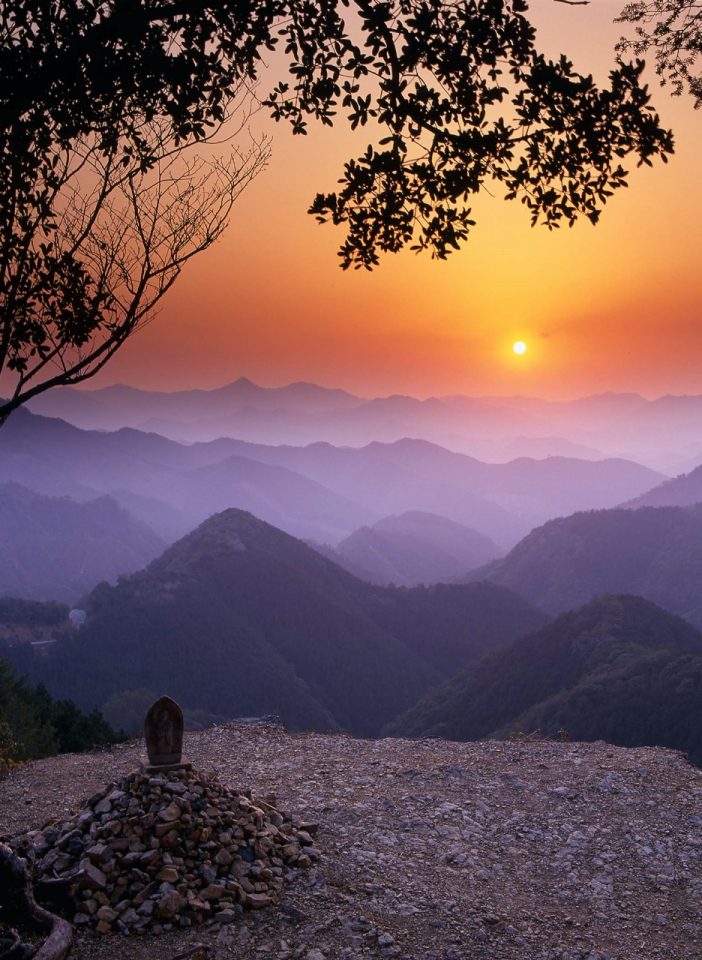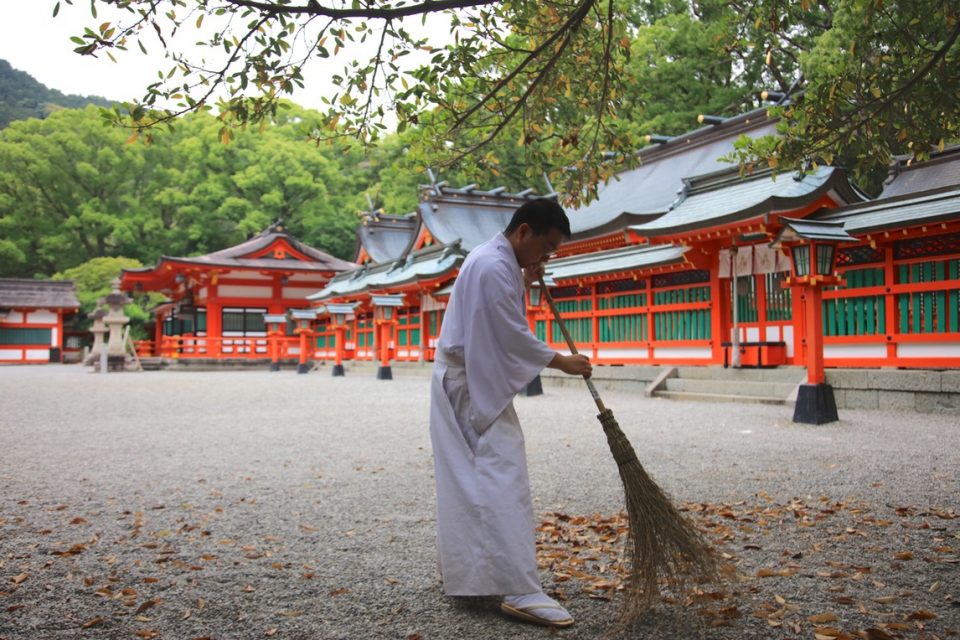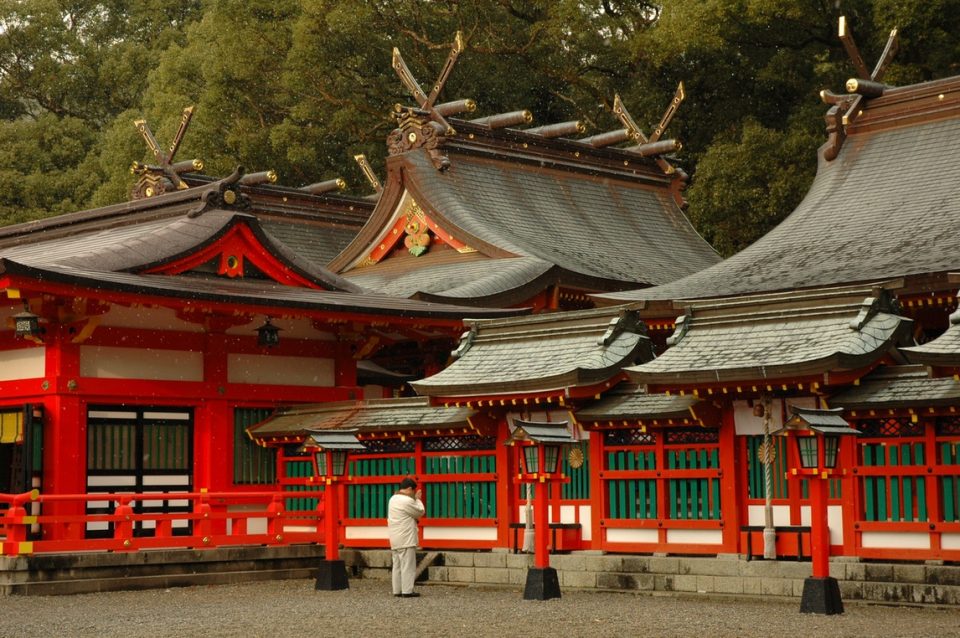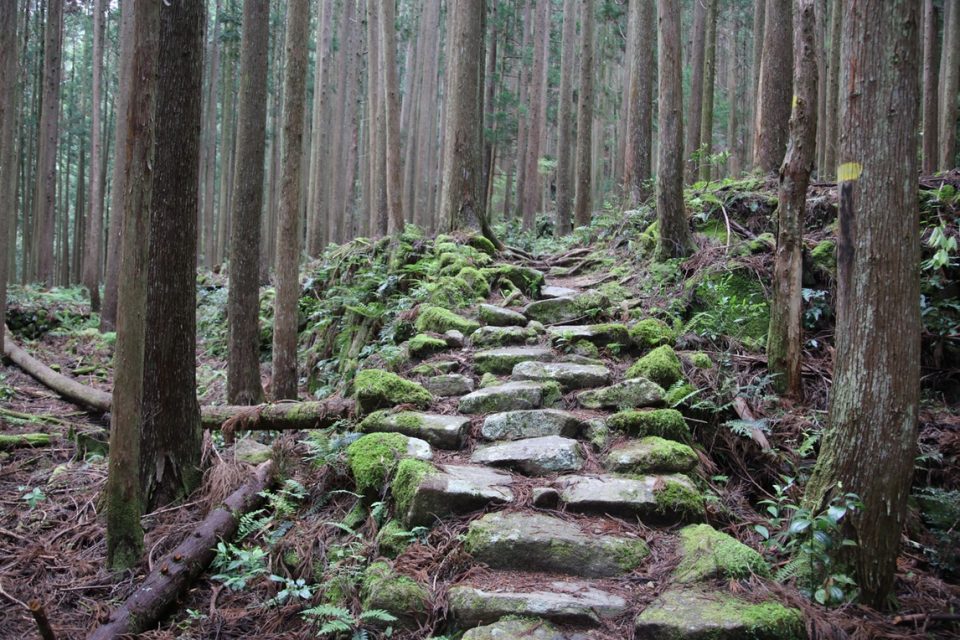length
8 Days
difficulty
Challenging - Strenuous
trip cost
From $2950
Nature Immersion
Cultural Interest
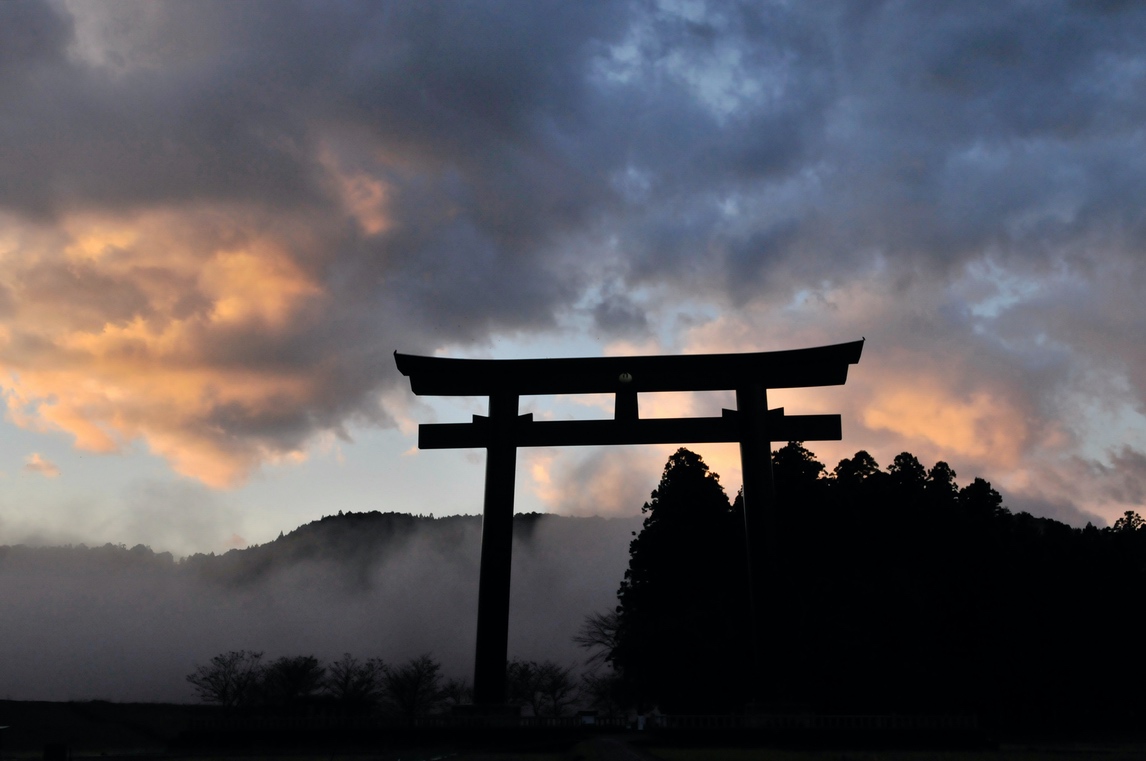
Highlights
Get Ready For
- Kumano Hongu Taisha Spring Festival
- Participate in a Purification ceremony
- Annual festival held in Hongu to honour the Kumano Deities
- Receive a commemorative Dual Pilgrim shirt and Tenegui
- Walk the only other UNESCO World Heritage registered pilgrimage route and become a Dual Pilgrim

Dual Pilgrim video
Kumano & Camino
If you walk both the Camino de Santiago and the Kumano Kodo then you will become one of a select group of Dual Pilgrims and be honoured with a ceremony in the Kumano Hongu and receive a special certificate and t-shirt. RAW Travel was chosen as the ‘Dual Pilgrimage’ specialist company in Australia.
The video presentation here on the right was produced by the respective tourist boards of the Camino de Santiago and Kumano Kodo pilgrimage walks and gives you an overview of the significance of these ancient pilgrimages and why they were twinned as the only two World Heritage walks in the world by UNESCO.
Itinerary
Daily Details
The best way to reach Kii-Tanabe is by train – there are frequent trains from Kansai Airport, Osaka and Kyoto travelling southwards to Kii-Tanabe (train tickets not included and can be purchased locally). Here the railway line parallels the coast and avoids the steep mountainous interior. Train travel from Osaka to Kii-Tanabe takes just over 2 hours and from Kyoto approximately 2.5 to 3 hours. Kansai International Airport (KIX) is the closest to this area.
Kii-Tanabe is the gateway town to the Imperial Route of the Kumano Kodo, surrounded by the Pacific Ocean on one side and mountains on the other. The town is also home to the Tanabe Tourist Information Center – here you will have a group orientation, scheduled for the afternoon. During your orientation you will be presented with your Dual Pilgrim shirt.
Following your orientation is a special experience to prepare you for your Kumano Kodo – a purification ceremony at the Tokei-jinja Shrine in Kii-Tanabe. Purification and offerings are an important aspect of Japanese spirituality so partaking in a purifying ceremony is a unique opportunity. The ceremony begins with a ritual purification. Next prayers are offered to the deities for you to have good luck, happiness and protection along your Kumano Kodo pilgrimage. The ceremony ends with a drink of sake – taking three sips from the cups poured by the miko (shrine maiden) – and being presented with your Talisman to wear on your daypack or self, as you journey along your pilgrimage. You will have a private guide to further enhance the experience and understating of such a sacred ritual. Following the ceremony your guide will take you for a short orientation walk down to the Tanabe Ogigahama beach area before you are transferred to your accommodation.
This evening you will be staying in an eco-tourism complex a few kilometres from the town centre. Before dinner you might like to go for a stroll amidst the orange and ume orchards.
Meals: D
It is an early start today and after checking out and picking up your lunch box, you and your fellow pilgrims will take a group taxi to Takijiri where you will commence the walk. The first section of today’s walk will be a continual steep climb up from Takijiri-oji to Takahara, a rural hamlet on a ridge, noted for its ancient shrine surrounded by giant kusu-noki, or camphor trees, and a spectacular view over the surrounding Hatenashi mountain ranges. Reminders of the past, including Buddhist statues and oji shrines, line the route along the ancient highway as you climb upwards.
Leaving Takahara behind, you head further into the mountains along the old trail, past bamboo forest and then into the pencil pine. You continue to pass by reminders of the old highway, including an ichirizuka distance marker and the sites of old former tea houses, which provided rest and shelter to pilgrims up until the early 20th century. Continuing on, you’ll crest the Hashiori-Toge pass after a short climb. The trail then descends past the Three-Fold Moon viewing area and the Michi-no-Eki rest area, one of a network of rest areas across Japan.
From here you have the last 1.5km, for the day, which is mostly downhill. Along the way there is a short climb to the small but famous Gyuba-doji statue. This ancient statue shows Kazan, one of the first abdicated emperors to pilgrimage to Kumano, sitting astride both a horse and a cow. Your final descent takes you along a cobbled path and staircase to Chikatsuyu, a small village and one of the few places where you can get limited supplies or drinks. You will stop here for the night.
Meals: B, L, D
Today is your longest walking day and so another early start is required to give you plenty of time to reach Hongu. Along the way you will walk up and down many forest paths and eventually through some mountain top villages before descending to Hongu.
Your walk begins with a climb to Tsugizakura-oji village. Nearby is a grove of giant cedar trees, some of which are reputed to be 800 years old! You will then spend much of the day traversing over a number of passes, including a permanent detour in place due to landslides on the main path. There are few facilities on this part of today’s route which is through the forest before eventually leading you to the shrine at Hosshinmon-oji. At this point you also have the option to take a local bus (paid locally) as the road intersects here, or if time permits, carry on down into the valley for the final 7km to Hongu.
This final section is a highlight for many walkers as you continue through small settlements and get your first glimpse of the great Kumano Hongu Taisha Shrine and the giant torii gate called Oyunohara in the valley below.
Kumano Hongu Taisha is the main shrine in the area, to which all roads in the Kumano Kodo pilgrimage lead. A long stone staircase leads to the sacred grounds of the shrine, located on a ridge and surrounded by giant cedar and cypress trees. After looking around the impressive shrine you will jump on a local bus (paid locally) to your evening destination at nearby Kawayu Onsen, a charming little hot spring village.
Arriving at your overnight location is a treat for tired walkers as the steam billows from the thermal rivers and there is the promise of a relaxing onsen after your exertions. The onsen thermal hot spring baths are an important part of the Kumano Kodo traditions with pilgrims performing hot water purification rituals in preparation for visiting the shrine. For you, it will be more preparation for a delicious Japanese meal in your accommodation and a good night’s sleep!
Meals: B, L, D
Hongu village is home to the Kumano Hongu Taisha, one of the Kumano Sanzan (the three grand shrines of Kumano) and head shrine of over 3,000 Kumano shrines across Japan. Kumano was said to be the entrance gateway to the land of Yomi, the ‘other world’, which spirits travelled to in Japanese mythology. Across the road from the Kumano Hongu Shrine you will find the Kumano Hongu Heritage Centre, featuring a diversity of exhibitions on the Kumano Kodo – all permanent exhibitions and videos include English translations. Just nearby the centre you will find Oyunohara and Otorii, the largest torii shrine gate in the world at 34 meters tall, signifying the division of the secular and the spiritual worlds.
The Spring festival is held April 13th to 15th every year and is not only a quintessential festival of Kumano but intimately associated with the pilgrimage to Kumano and the Kumano Kodo pilgrimage route. Early this morning you may like to observe the ceremony at Kumano Hongu Taisha.
When you visit the Hongu Heritage Centre you can also receive your dual pilgrim badge. You can also choose if you would like to be featured on the Dual Pilgrim Spiritual Pilgrimages website.
The rest of the day is free for you to do as you wish. You might like to relax and enjoy the river onsen at your accommodation, or if you want to stretch your legs a little then walk back to Hongu on the Dainichi-goe route from Yunomine Onsen – this is a steep but delightful walk, passing some remarkable old carved statues at Hanakake Jizo, overgrown by tree roots. You might like to visit the tiny Tsuboyu onsen in a wooden cabin at the centre of town in Yunomine Onsen, which is the only UNESCO world heritage listed spa and the oldest in Japan at 1200 years old! The bath can be booked for a 30-minute private bathing and works on a first come first serve basis.
However the main highlight for today is the Spring Festival activities. This afternoon, the festival procession will make its way from Kumano Hongu Taisha to Oyunohara, a sandbank at the confluence of the Kumano and Otonashi Rivers. Legend has it that the Kumano deities, in the form of three moons, descended into the branches of a giant oak tree in this clearing. All of the Kumano Kodo pilgrimage routes lead to this sacred site. At Oyunohara various rituals and celebrations take place, including fire rituals and mochi rice cake scramble. The atmosphere is serene and it is a privilege to witness the upholding of such traditions. At around 4pm the profession returns back to Kumano Hongu Taisha where the final ceremony is held at 5pm.
Meals: B, D
This morning your accommodation will shuttle you the short distance to Ukegawa to begin your walk. Or you have the option to walk an extra 30 minutes along the river from your Ryokan to the trail head. Today’s walk on the Kogumotori-goe section is fairly gentle, mostly in the forested mountains with some nice ridge-walking sections. It is considered to be the easiest day of your pilgrimage, and a nice opportunity to stretch the legs and get them warmed up again in preparation for the challenging final day tomorrow.
The highlight is the Hyakken-gura pass, where a beautifully positioned Buddhist statue on a hilltop has a backdrop of the most spectacular views of the trail. The impressive Hyakken-gura lookout surprises walkers with a lovely panoramic view of the 3600 peaks of Kumano. Take a moment to enjoy this stunning view, as pilgrims have been doing for over 1000 years.
The trail continues to rise and fall, sometimes gradual and occasionally more steep as you continue towards the Sakura-jaya teahouse remains. The views from the Sakura-jaya teahouse remains, down to the valley and across the mountains are impressive. It is said that when the owners of teahouses saw pilgrims approaching from far off in the distance, they would start to cook mochi rice cakes and boil water for tea, to have things ready to serve just as the pilgrims would arrive at the teahouse. This is also a good location to stop and eat your packed lunch.
From here the trail continues on a forest track and eventually descends into Koguchi, a small and isolated village surrounded by mountains and rivers.
Meals: B, L, D
The Ogumotori-goe is the second day of a two-day trek from the Hongu area to Kumano Nachi Taisha. It is one of the toughest sections of the Nakahechi trail, despite appearing a similar distance in kilometers to the previous day, and a big day’s walk so we recommend an early start. Your accommodation will arrange a shuttle to the trailhead at 7:40 to allow sufficient time.
Early on in your walk, you will encounter the 2.5-hour uphill climb of the Dogiri-zaka slope. Dogiri-zaka can be directly translated as “Body Breaking Slope”, and this is an appropriate name for this 5km uphill section that rises 800 metres to the Echizen-toge Pass.
Afterwards, you pass the Jizo-jaya teahouse remains, to the Moja-no-Deai, ‘Abode of the Dead’. It is believed that the souls of the dead gravitate to these higher mountains, where spirits inhabit this section of the trail. The walk continues through forest and along ridges, the path ascending and descending, until at Funami Toge pass the Pacific Ocean spreads out before you.
From here the trail descends to the Nachisan sanctuary and the brightly colored Kumano Nachi Taisha shrine, another of the three grand shrines of Kumano. Also nearby is the wonderful wooden Seiganto-ji temple and the spectacular Nachi-no-Otaki waterfall, the highest waterfall in Japan and can be seen from far out on the Pacific Ocean.
Tonight you will stay in Nachisan near the Kumano Nachi shrine. Relax and enjoy the completion of your extraordinary Kumano Kodo walk!
Meals: B, L, D
Early this morning you might like to walk back up from your accommodation to the Seiganto-ji Temple for the 5am prayer ceremony held by the monks each day.
Following breakfast at your accommodation, you can then head out along an extra section of the Kumano Kodo pilgrimage route, the Daimon-zaka, an impressive 600m long cobblestone staircase. Daimon-zaka means “large gate slope” referring to a shrine-gate that once stood nearby. The trail is an impressive cobblestone staircase lined with centuries-old trees and a beautiful walk. At the bottom of the slope is the Daimon-zaka bus stop and from here you catch a local bus to Nachi station and then on to Shingu. While waiting for your bus, visit the local teahouse at the base to collect your stamp for the last Oji (Tafuke-oji).
In Shingu, visit the third of the Kumano grand shrines, Kumano Hayatama Taisha. Though recently rebuilt, the buildings of Hayatama Taisha have occupied the same location since at least the 12th century and the area has been a site of nature worship for much longer. In fact, the nature in and around the shrine is an integral part of this Grand Shrine’s precincts and annual rituals. The ancient 800-year-old Nagi-no-Ki tree highlights the area’s deep tradition of nature worship and is considered a sacred tree of God. Small dolls made from the seeds of this tree are believed to generate luck with the opposite sex or a happily married life to couples.
We also recommend visiting the nearby Gotobiki-iwa, a gigantic rock worshipped as a sacred object and located halfway up Gongen Mountain. It is believed that it was here that the first Kumano deities descended to earth from the heavens. At the base of this monolith is the Kamikura-jinja shrine. Closely tied with Hayatama Taisha, this small but stunning cliff top shrine is reached by a long 500+ stone staircase. The Shingu Castle remains are also a popular spot for viewing spring cherry blossoms.
Take the bus to Kii-Katsuura, a small port and fishing town where your accommodation looks out over Katsuura Bay. Several shotengai (covered arcades) radiate out from Kii-Katsuura’s train and bus stations. Enjoy wandering through this area on the short walk to your Ryokan. You will see lots of souvenirs such as the local sake and marine products including dried bonito, seaweed and pickled vegetables. If time permits you might like to stroll around the small harbour before you check-in.
If you feel a bit tired after walking around today you can soak your feet in the Umi-no-Yu (“Sea Bath”) foot and hand bath at Katsuura fishing port. Soaking your feet in the footbath while watching fishing boats in the harbour is a great way to unwind and relax.
Meals: B, D
Today enjoy a leisurely breakfast and then transfer by train to your onwards destination. Train tickets are not included and can be purchased locally at the Kii-Katsuura train station which is a short 10-minute walk from your ryokan.
If you think you might be able to handle another early start and do not need to rush off, then you might like to venture up to the local fish market, a chance to see a traditional Japanese fish market in less crowded and more informal circumstances than the hugely popular Tsukiji Fish Market in Tokyo. Katsuura is only one of two ports in Japan which receives tuna year-round – in fact more tuna is found here than anywhere else in Japan. At the local fish market, you can watch from designated observation areas as 150kg specimens are lined up and sold off during the lively early morning auctions. Near the fish market is the bustling Nigiwai Market with many shops selling just about every type of fresh tuna such as sushi and bento boxes – you might like to pick up some lunch to take with you on your onward journey. There are also souvenirs and other local specialities – especially popular are the vinegar made with the water of Katsuura Nachi Falls and Nachi black candy.
Meals: B
Map
Explore
Kii-Tanabe
Kii-Tanabe is the gateway town to the Nakahechi (‘Imperial Route’) of the Kumano Kodo. It is surrounded by the Pacific Ocean on one side and mountains on the other. From here, it’s a 40-minute bus ride to the trailhead at Takijiri-oji.
CLICK ON A PIN TO REVEAL INFORMATION ABOUT THAT LOCATION
Takijiri
Takijiri is the traditional starting point of the Kumano Kodo walk and where you will find the Kumano Kodo Kan Pilgrimage Centre. The trailhead is behind the Takijiri-oji, which is considered to be where the passage into the precincts of the sacred mountains begins.
Chikatsuyu
The small village of Chikatsuyu sits at the base of the mountain trail at the Hidaka-gawa River. Inns and a couple small restaurants run along the main road, which runs east and west. The area features an ancient weeping cherry blossom tree, an ancient graveyard for warriors, a local experience centre and Chikatsuyu-oji.
Tsugizakura-oji
At the impressive Tsugizakura-oji shrine there are giant Nonaka-no-Ipposugi cedar trees. Some have a circumference of 8m and are believed to be up to 800 years old. This shrine, along with its trees, was scheduled to be demolished in 1906 as part of the government’s shrine consolidation program. It was saved by Minakata Kumagusu, an eccentric genius researcher and avant-garde environmentalist.
Hosshinmon-oji
Hosshinmon-oji is one of the most important sites on the Kumano Kodo pilgrimage route. It marks the outermost entrance into the divine precincts of the Kumano Hongu Taisha.
Kumano Hongu Taisha
Kumano Hongu Taisha is one of the three grand shines of Kumano and the head shrine of over 3000 Kumano shrines across Japan. A long stone staircase leads to the sacred grounds of the shrine, located on a ridge and surrounded by giant cedar and cypress trees. On the riverbank is Oyunohara, the original shrine ground of Kumano Hongu Taisha, marked by an immense Torii gateway – the biggest in Japan!
Yunomine Onsen
Yunomine is a quaint little collection of inns tucked into a small valley deep in the heart of the sacred mountains of Kumano. It was discovered about 1,800 years ago, and it is thought to be one of the oldest hot springs in Japan. The onsen culture in Japan is very rich, but the strong connection with spiritual culture found in Yunomine is unprecedented.
Kawayu Onsen
On the north side of this hot spring town is a diverse collection of places to stay. On the south side of the river is a green forested mountainside. The defining feature of Kawayu Onsen is the Oto river. In the evening, enjoy a soak while watching the warm mist from the river rise slowly into the clean mountain air.
Hyakken-gura pass
At the Hyakken-gura pass there is a beautifully positioned Buddhist statue on a hilltop with a backdrop of the most spectacular vista of the trip! The impressive lookout surprises walkers with a lovely panoramic view of the 3600 peaks of Kumano.
Koguchi
The small mountain village of Koguchi is nestled along the Akagi-gawa River almost directly in-between Hongu and Nachi. It is refreshing to put your feet in the river after a hot day’s hike.
Nachisan
Nachisan is where you’ll find the brightly coloured Kumano Nachi Taisha shrine, the wonderful wooden Seiganto-ji temple and the spectacular Nachi-no-Otaki waterfall, which is the highest in Japan and can be seen from far out on the Pacific Ocean. The extra section of trail between Nachisan and Daimon-zaka is an impressive cobblestone staircase lined with centuries-old trees.
Kii-Katsura
Kii-Katsura is located on the southeast coast of the Kii Peninsula. It is in essence a fishing port turned hot spring resort. The most dominant landmark in Katsuura is the Hotel Urashima. It has the feel of an Onsen Disneyland or James Bond-like fortress and is located on an island-like peninsula in Katsuura Bay.
Shingu
Shingu is where Kumano Hayatama Taisha, one of the sacred Grand Shrines of the Kumano region, is located. Although the shrine buildings were rebuilt recently, the Hayatama Taisha has occupied the same location since at least the 12th century and the area has been a site of nature worship for much longer. The ancient 800-year-old Nagi-no-Ki tree highlights the area’s deep tradition of nature worship and is considered a sacred tree of God.
Inclusions
What you get
- 1 night in Kii-Tanabe (twin share, ensuite)
- 3 nights in traditional Japanese guesthouses along the Kumano Kodo (twin share, shared bathroom)
- 2 nights in an onsen village in a traditional ryokan (twin share, ensuite)
- 1 night Katsuura in a traditional ryokan (twin share, ensuite)
- Daily meals included as listed in the itinerary
- Luggage transfers on all trekking days and day 7
- Group tour orientation in Kii-Tanabe at the start of your walk, including information pack and maps
- RAW Travel’s exclusive interactive navigation app
- Pre-departure pack including exclusive RAW Travel Kumano Kodo guidebook, RAW Travel buff and luggage tags
- Dual pilgrim shirt and Tenegui
- Dual pilgrim completion certificate
- Purification Ceremony (private/guided)
- Group transfer by local taxi to your accommodation in Kii-Tanabe on day 1 and to the trailhead on day 2
- Local bus tickets
- Train tickets to/from trail
- Flights to/from destination
- Travel insurance
- Beverages other than water/tea at meals
- Expenses and items of a personal nature
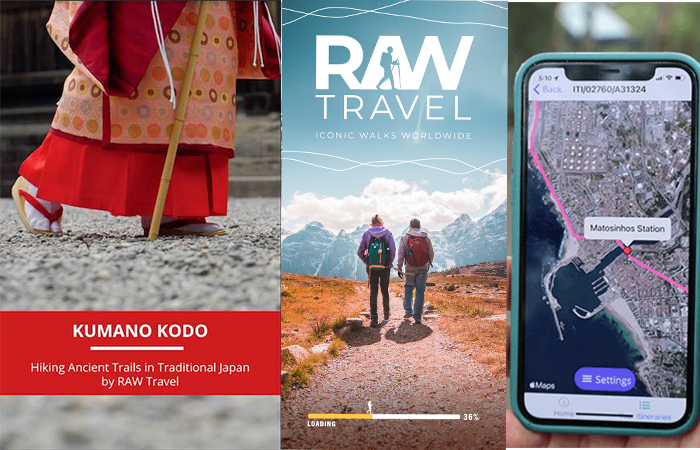
Kumano resources
Finding your way
We have researched and published our own Kumano Kodo Guidebook based on the experiences of many years of running trips here ( we were the first Australian Company to offer the Kumano Kodo) and have now supplemented this with our Walking app, designed to help you navigate easily on the trail showing your location in real-time without any internet connection needed. The app has many great features; it shows you weather forecasts localized for each of your overnight stops, and information on the location of each night’s accommodation. There are important reminders, safety information, videos, and emergency contact information for your route. It also has a unique audio feature that can tell you about places and points of interest as you approach them on the trail.
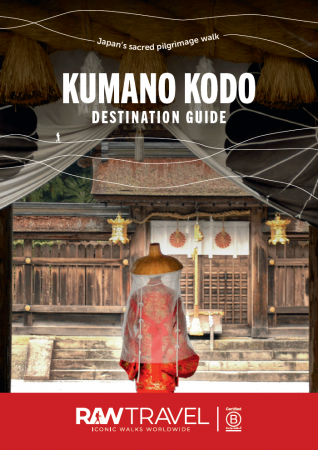
Exclusive Guide
get inspired
Japan’s ancient Kumano Kodo trails are nestled in the verdant mountains of the southern part of the beautiful Kii Peninsula, just south of Osaka. This lush and rugged area has been considered the abode of the gods and worshipped for centuries.
Our destination guide is bursting with all you need to know about walking the sacred Nakahechi pilgrimage route, the most popular and accessible of all the routes. You’ll love the peacefulness and tranquillity of the trail, the food (so elegant and refined!), the onsens (a cherished Japanese ritual), and the traditional family run guesthouses, full of character and charm.
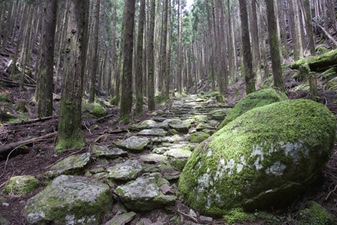
Kumano Kodo
The 7 Day Trail – Kumano Kodo
- Walk the full length of the Nakahechi trail
- Stay in traditional guesthouses
- Gain insights into life in rural Japan and the spiritual history
- Enjoy delicious handmade Japanese food with fresh local ingredients
$2,450.00
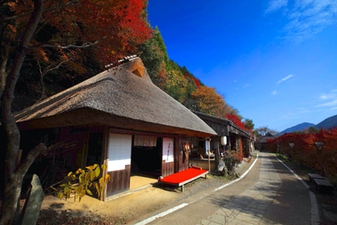
Kumano Kodo
The Autumn Trip – Kumano Kodo
- Stay in traditional guesthouses
- Beautiful, changing colours are a highlight for people on this trek
- Enjoy delicious handmade Japanese food with fresh local ingredients
- A great option for solo travellers or enjoy the company and support of others
$2,790.00
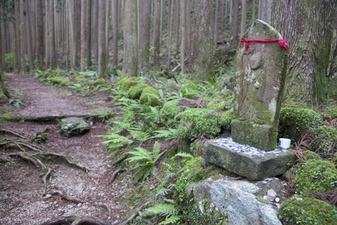
Kumano Kodo
The Extended Trip – Kumano Kodo
- Hike the full length of the Nakahechi route
- Enjoy a day on the challenging Kohechi route
- Journey along the Kumano-gawa river in a traditional boat
- Experience the life of a monk by staying in a Buddhist monastery
$3,595.00
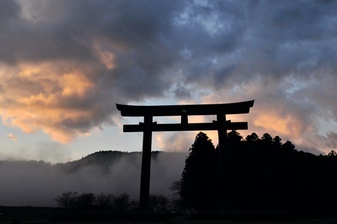
Kumano Kodo
The Highlights Trip – Kumano Kodo
- Stay in traditional minshuku and ryokans
- Enjoy a traditional boat ride on the Kumano-gawa river
- Savour delicious Japanese cuisine
- Visit all 3 Kumano Sanzan grand shrines
$2,190.00
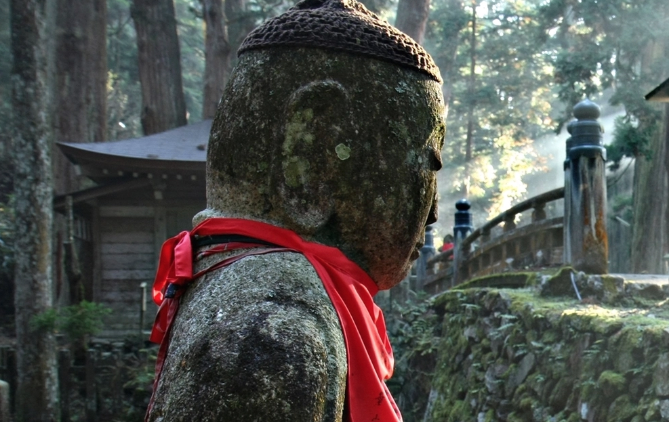
Kumano Kodo
Koyasan and Kumano Kodo
- Beautiful nature walking through rugged, forested mountains, quiet rural valleys and alongside rivers.
- Visit temples, shrines and traditional gardens
- Stay at a Japanese Buddhist temple
- Learn about traditional daily rituals, join a spiritual ceremony
$3,195.00
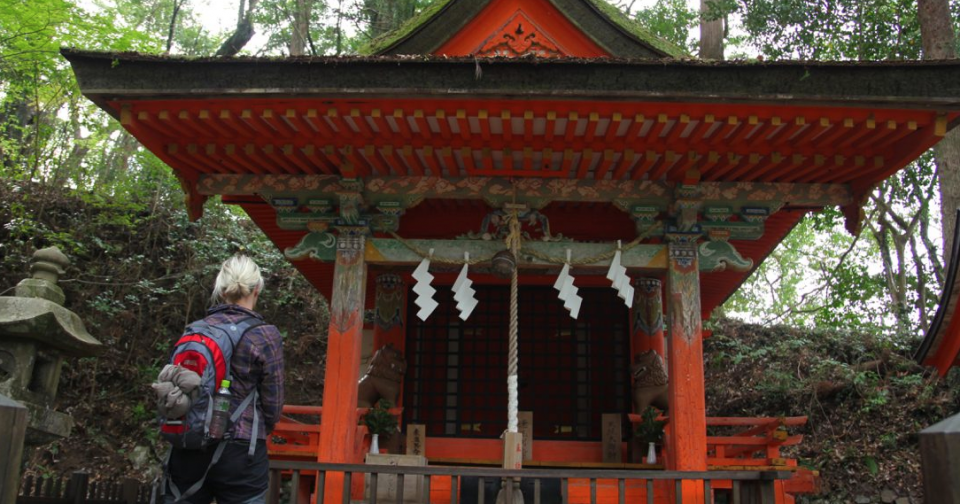
Kumano Kodo
Nakahechi & Kohechi trip – Kumano Kodo
- Challenging hike through the rugged forested mountains
- Walk the full length of both the Nakahechi and Kohechi routes
- Journey along the Kumano-gawa river in a traditional boat
- Stay in a Buddhist monastery in Koyasan
$4,355.00
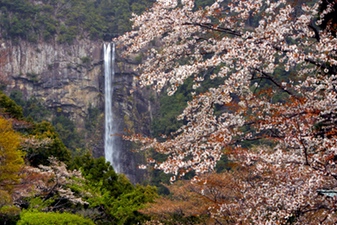
Kumano Kodo
The Spring Trip – Kumano Kodo
- A great option for solo travellers
- Stay in traditional guesthouses
- Spring is a wonderful time to hike the Nakahechi Trail
- Enjoy delicious handmade Japanese food with fresh local ingredients
$2,790.00
TRIP date selection
when would you like to travel?
Please select your preferred dates for on-demand trips or select a scheduled date for group departures. If you have booked a self-guided trip please understand that because your trip date is on demand and we must check availability of all properties on your chosen dates before it can be fully confirmed



